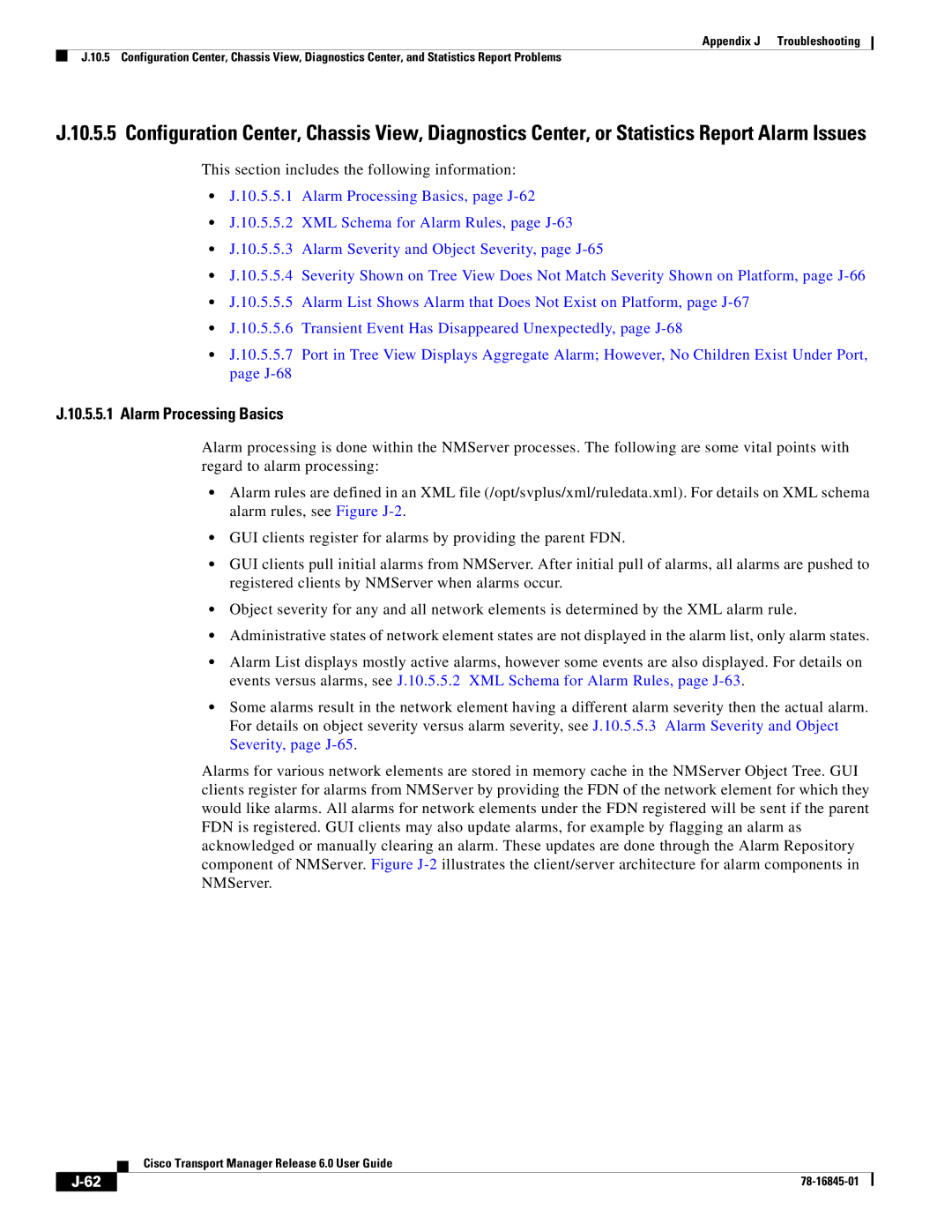
Appendix J Troubleshooting
J.10.5 Configuration Center, Chassis View, Diagnostics Center, and Statistics Report Problems
J.10.5.5 Configuration Center, Chassis View, Diagnostics Center, or Statistics Report Alarm Issues
This section includes the following information:
•J.10.5.5.1 Alarm Processing Basics, page
•J.10.5.5.2 XML Schema for Alarm Rules, page
•J.10.5.5.3 Alarm Severity and Object Severity, page
•J.10.5.5.4 Severity Shown on Tree View Does Not Match Severity Shown on Platform, page
•J.10.5.5.5 Alarm List Shows Alarm that Does Not Exist on Platform, page
•J.10.5.5.6 Transient Event Has Disappeared Unexpectedly, page
•J.10.5.5.7 Port in Tree View Displays Aggregate Alarm; However, No Children Exist Under Port, page
J.10.5.5.1 Alarm Processing Basics
Alarm processing is done within the NMServer processes. The following are some vital points with regard to alarm processing:
•Alarm rules are defined in an XML file (/opt/svplus/xml/ruledata.xml). For details on XML schema alarm rules, see Figure
•GUI clients register for alarms by providing the parent FDN.
•GUI clients pull initial alarms from NMServer. After initial pull of alarms, all alarms are pushed to registered clients by NMServer when alarms occur.
•Object severity for any and all network elements is determined by the XML alarm rule.
•Administrative states of network element states are not displayed in the alarm list, only alarm states.
•Alarm List displays mostly active alarms, however some events are also displayed. For details on events versus alarms, see J.10.5.5.2 XML Schema for Alarm Rules, page
•Some alarms result in the network element having a different alarm severity then the actual alarm. For details on object severity versus alarm severity, see J.10.5.5.3 Alarm Severity and Object Severity, page
Alarms for various network elements are stored in memory cache in the NMServer Object Tree. GUI clients register for alarms from NMServer by providing the FDN of the network element for which they would like alarms. All alarms for network elements under the FDN registered will be sent if the parent FDN is registered. GUI clients may also update alarms, for example by flagging an alarm as acknowledged or manually clearing an alarm. These updates are done through the Alarm Repository component of NMServer. Figure
Cisco Transport Manager Release 6.0 User Guide
|
| ||
|
|
